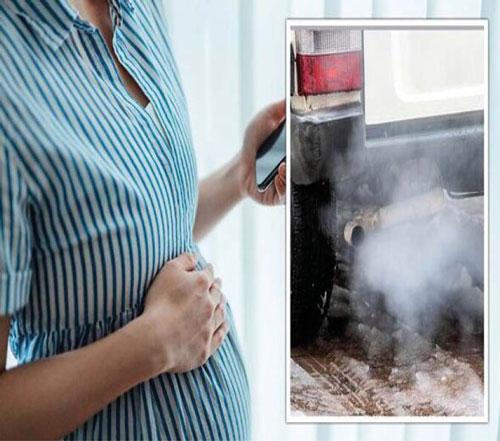The scientists believe that the particles can cross to the unborn baby through the placenta as early as the first trimester of pregnancy. Previous research shows that specific environmental hazardsTrusted Source can impact an unborn baby.
For example, scientists link exposure to secondhand smoke during pregnancy to a 13% increasedTrusted Source risk of birth defects and a 23% increased risk of stillbirth. And researchers have also found that exposure to leadTrusted Source, pesticides, and air pollutionTrusted Source can impact the health of a baby in the uterus.
Now a research team from the University of Aberdeen in Scotland, United Kingdom, and Hasselt University in Belgium has found evidence of air pollution particles in the lungs, liver, and brain of unborn babies. The scientists believe the particles are able to cross the placentaTrusted Source and enter the fetus while in the womb as early as the first trimesterTrusted Source of pregnancy.
According to the study’s joint senior author Dr. Tim Nawrot, professor of environmental epidemiology at Hasselt University, the main purpose of this research was to determine whether air pollution could reach an unborn baby. “Previously, we foundTrusted Source that particles could get from the maternal lungs to the placenta,” he told Medical News Today. “If they can get from lungs to blood, they are so small that they probably can reach all organs, [including] that of the next generation via gestational exposure.”
For this study, researchers focused on a type of air pollution nanoparticle called black carbon. Also known as soot particles, these black particles are the result of burning coal, diesel, and other biomass fuels. energy produces little over half of all black carbon, followed by transportation accounting for about 26% of all black carbon emissions.
In addition to having an adverse effect on the environmentTrusted Source, past research also shows black carbon has a negative impact on a person’s health, being linked to cardiovascular disease, asthma, and premature death.
For the study, the research team examined maternal-perinatal and fetal samples from Belgium and the U.K. Scientists utilized a technology called femtosecond pulsed illumination to check for the presence of black carbon in the samples. “Before our study, nobody knew for sure whether black carbon nanoparticles actually got into the fetus itself,” Prof. Paul Fowler, chair in translational medical sciences at the University of Aberdeen and the second joint senior author of this study explained for MNT.










